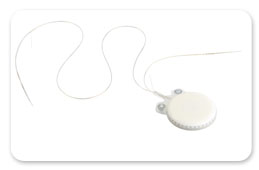|
Bilateral and Binaural Cochlear Implants:
The benefit of cochlear implantation for severe to profound hearing loss is well documented. There are limitations to a single implant, for example for localization of sound and when listening in noisy situations, The brain uses differences in intensity and timing between the two ears for determining the location of sources of sound, and this is difficult with only one hearing (implanted) ear!
Studies show that two implants do confer additional benefit for localization of sound, and performance in noise. NICE has recognized this additional benefit and recommended that children be offered two cochlear implants. However for adults NICE has calculated that the additional benefit from a second implant does not justify the additional cost, except in the presence of additional impairments such as visual loss.
The benefits of bilateral cochlear implantation include stimulation of both ears and laying down central pathways bilaterally, better localization of sound, better hearing in noise, and a degree of future proofing in case something happens to one implant and it cannot be replaced for whatever reason.
Parents are often hesitant about bilateral implantation as they want to keep one ear for future developments such as hair cell regeneration. However, this is still some way away, and if the central pathways are not stimulated during the first 5 years of life during the brain’s plastic period, it is unlikely that hair cell regeneration later on will allow these pathways to develop. At present therefore bilateral cochlear implantation is probably the best option for suitable children.
Some adults may pay for a second implant themselves or through medical insurance. Alternatively, they may opt for a Neurelec binaural implant. This is a single implant, but with two electrodes, one for each ear. The ipsilateral electrode is inserted in the standard fashion, while the contralateral electrode is tunneled beneath the scalp to the contralateral ear and inserted.
Two microphones and ear hooks are worn, connected by a wire at the back of the neck. This allows sound to be detected from both sides, and both ears to be stimulated.
Theoretically, as one processor is used to detect and stimulate, it should be able to use inter-ear loudness and timing cues better than two separate cochlear implants. It remains to be seen whether this arrangement results in better outcomes than bilateral cochlear implants.
|

